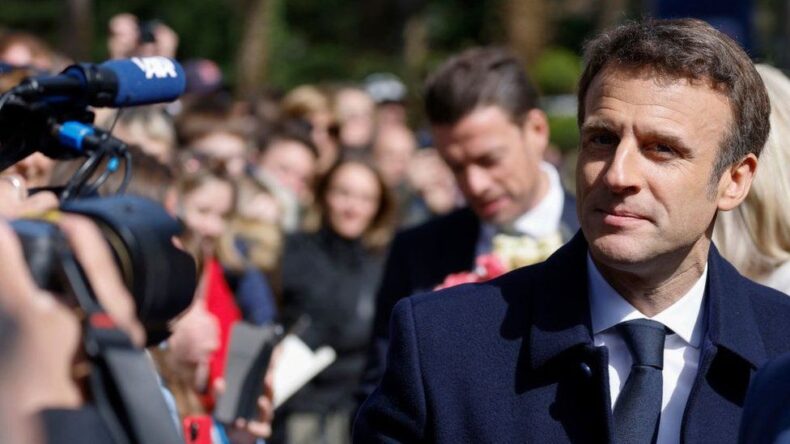On Sunday, 10th April, France held its first round of elections for the post of President, which is the highest position of office in the country. There are twelve candidates in the race but the title fight has come down to the incumbent President Emmanuel Macron and Marine Le Pen, a 53 years old veteran regarded as a far-right politician.

The two leaders had earlier locked horns in 2017 when Macron had defeated his experienced rival campaigner by a comfortable margin. The two leaders have yet come again to the fore, with Macron seeking a second term as the head of state of France and a rejuvenated Le Pen bringing a much stronger challenge.
Marginal Victory
Of around 48 million eligible voters, only 65 percent turned up on Sunday to participate in the first round of elections. This turnout figure was lower as compared to the previous election even after many officials expected an even higher rate of abstention.
With the victory of 2017 still fresh in the memory of many, there was a casual approach to the assumption that Macron would win by a landslide without any stable opposition. However, the polls depicted an intriguing reality. Despite achieving 27% of the votes to go further in the second round, Macron will be watching at his back as Le Pen stands convincingly with 23% votes.
Perhaps more surprisingly, even Le Pen herself won by a narrow lead as Jean-Luc Mélenchon, a left-leaning candidate almost overturned her presidential hopes with 22% of votes from his left-wing supporters.
These voters may come to play a crucial role in the upcoming second round on April 24 as the La France Insoumise leader has advised his followers to not cast their ballot for Le Pen, thus leaving the door open for Macron to carry them in his favor.

In the next round that will take place after two weeks, Le Pen will attempt her third shot at the role of president, and her second against Macron who had demolished her in the previous election to become the youngest president of France ever. Many factors have shaped the elections so far in favor of Le Pen, with the campaigns closing at the same time as inflation and soaring prices of food and energy have affected the deciding factors of the voters.
Differing Stands
With terrorism in the name of religion as well as the Russia-Ukraine war, Le Pen has used the circumstances to propagate a ban on Muslim headscarves, also known as the hijab, on streets and also targeting halal and kosher butchers. This is not in line with the centrist government of Macron which has supported the wearing of the hijab in sports events as well.
Due to the growing surge of immigrants from Eastern Europe, Le Pen has also spoken against allowing such immigrants into France and Europe as a whole, although her immigration policy seems to have softened recently. This is at a time when France has welcomed thousands of Ukrainian refugees pouring from the war-affected regions.
Conclusion
In another consequential way, the current war in Eastern Europe has kept the French President busy as he has been acting as a mediator between Ukraine and Russia and urging the sides to settle
the conflict through peaceful negotiation. In the meanwhile, Le Pen has extended her influence by traveling across the country as a significant tactic to reach out to the people. This influence may be short-lived but the risk of a potential candidate so close to Macron may just be enough to turn around the rest of the disarrayed voters.
Published by: Raj Vaja













